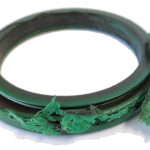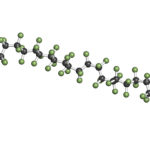By Josh Cosford, Contributing Editor
Although pneumatic cylinders operate in many conditions, their capacity to withstand the pitfalls of those conditions often comes down to the chosen sealing technology. The performance and longevity of pneumatic cylinders depend on the quality of their seals. A seal’s primary purpose is to contain the compressed air within the cylinder and prevent it from leaking, which not only reduces efficiency but also increases energy consumption as air passes without doing useful work.

We must first consider the operating conditions, which are the most crucial factor when selecting seals for pneumatic cylinders. Next, consider the environment the cylinder will be used in, the temperature range (both internal and ambient), and the pressure range the cylinder will see. Finally, you must also consider environmental factors such as chemical exposure, dust, moisture, and ultraviolet light. Should any of these malevolent factors exist at extreme levels, be sure to consider seals designed to harm.
Another important factor to consider is the load requirements, such as the load’s mass and movement speed. The seals must be selected to withstand the forces and stresses generated by the load and velocity. With higher pressure, including those created through spikes or intensification, the seals can extrude out small gaps, such as between the piston and barrel. If high velocity is the primary design factor, low friction seals offer an efficient and reliable solution, which is less likely to subject itself to friction-induced softening. Consider lightly loaded lip seals as opposed to interference fit options like O-rings.
The seal’s polymer should be a prime consideration for any pneumatic cylinder application. Common seal materials include nitrile (Buna N), fluoroelastomer (Viton etc.), and polyurethane. Nitrile seals are frequently used in general-purpose applications and offer excellent resistance to oils and fuels. Fluoroelastomer seals are often used in high-temperature applications and have excellent chemical resistance. Polyurethane seals have excellent abrasion resistance and are often used in applications where the load is constantly in contact with the seal.
The seal’s profile is also essential for the performance of the cylinder. The profile refers to the shape of the seal and includes the cross-section, diameter, and overall shape. The profile must be compatible with the pocket or groove it’s installed within and must provide adequate pressure sealing capacity without leakage or extrusion. The seal cavity is a machined pocket to house the seal and keep it firmly in place, and it must neither be too large to allow leakage nor too small as to increase friction.
It is vital to consider seal compatibility with the lubricants used in the pneumatic cylinder. Some seals are incompatible with certain types of lubricants, which can cause the seals to fail. Lubricants that contain solvents, such as mineral spirits or benzene, can attack certain seal materials and cause them to swell or become brittle. Lubricants that are high in acidity or have a high pH can also attack certain seals. Silicone-based lubricants are not recommended for nitrile or fluoroelastomer seals, as they can cause the seals to become brittle and crack over time. Similarly, petroleum-based lubricants can attack fluoroelastomer seals and cause them to degrade. Be sure to ask your fluid power professional if you need to be made aware of possible conflicts.
You should consider the maintenance requirements of the sealing technology as well. Some seals require frequent maintenance, such as lubrication or replacement, while others have a longer service life. If the cylinder is a low-cost option, maintenance may not be a factor, but for expensive NFPA or ISO cylinders, a high-quality design is infinitely repairable. As many as seven or more seals may be used in a pneumatic cylinder – piston seals, rod seal, wiper, end seals and occasionally more.
Selecting the appropriate piston, rod, wiper, and end seals for pneumatic cylinders is critical to ensure their performance and longevity. Considering operating conditions, load requirements, seal material, profile, compatibility with lubricants, and maintenance requirements, your seal is given its best chance at survival, even in the most demanding application. Also, it is essential to work with your trusted fluid power supplier, who can assist you in selecting suitable seals for your pneumatic cylinder.








Leave a Reply